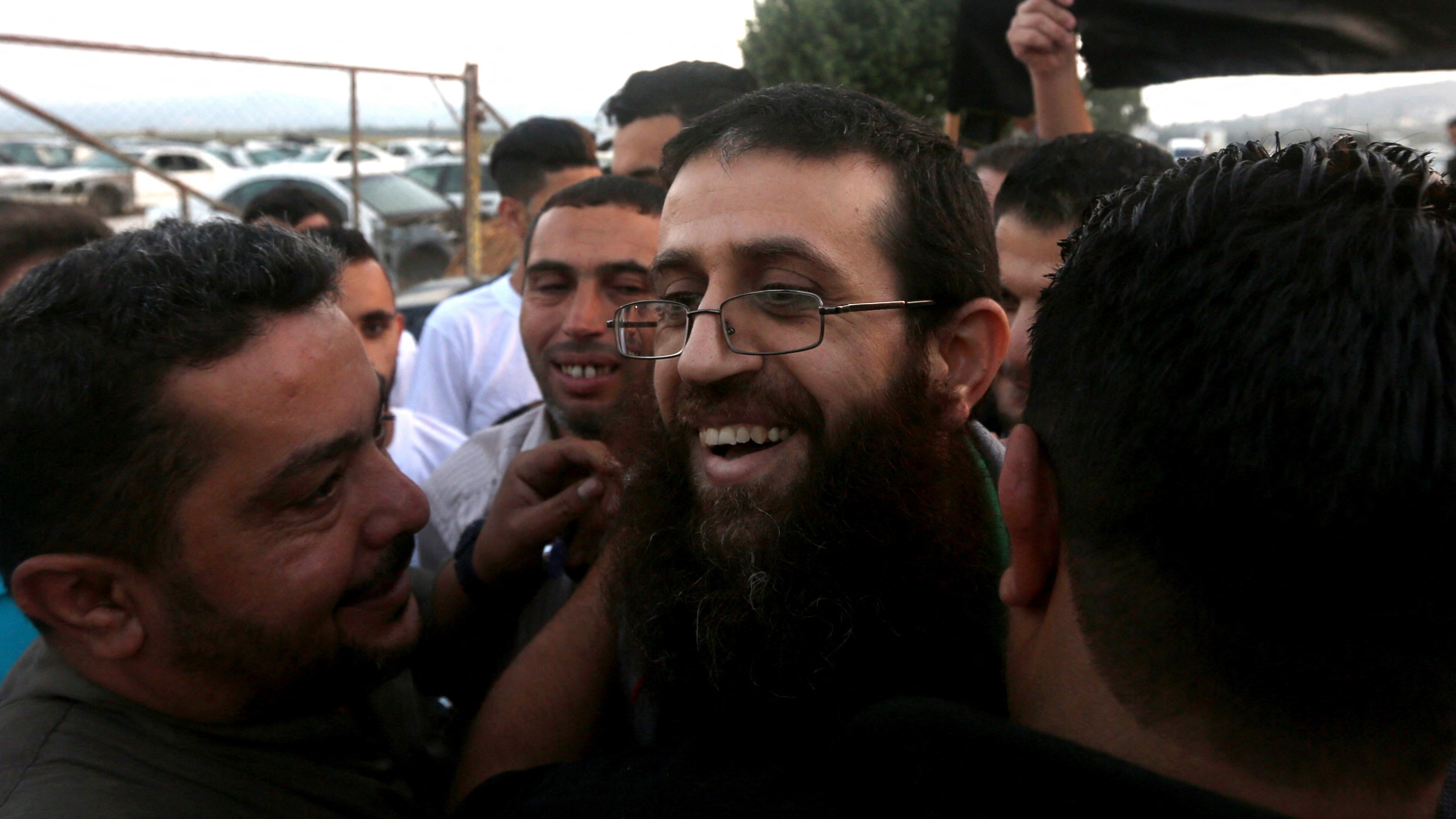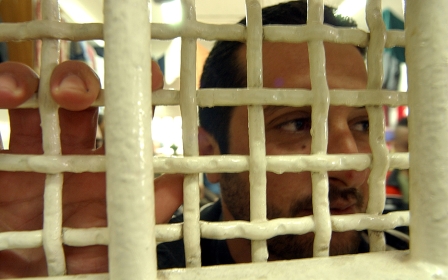Khader Adnan: Veteran Palestinian hunger striker and fierce anti-occupation activist

Just before dawn on 2 May, renowned Palestinian activist Khader Adnan died in an Israeli prison, aged 45, after nearly three months of hunger strike in protest against his detention.
Khader Adnan, a father of nine, had led a life of fierce anti-occupation activism in the occupied West Bank, costing him years behind bars and ultimately his life.
Best known for reviving solo hunger strikes against Israeli administrative detention, a policy in which Israel holds Palestinians without trial or charge indefinitely, Adnan spent a total of 316 days on hunger strike across various jails between 2004 and 2023.
The Palestinian Prisoners' Society (PPS), an umbrella advocacy group, said he will be remembered as a “true fighter” who led “long battles with his empty stomach to gain his freedom”.
“Today we lost a true leader," the PPS said in a statement. "[He] carried the voice of Palestinian prisoners to the world.”
Life of activism
Adnan was born in March 1978 in the town of Arraba, southwest of Jenin, 11 years after Israel had occupied East Jerusalem, the West Bank and the Gaza Strip.
Growing up under Israeli military rule, Adnan became involved in anti-occupation work from a young age.
He was first arrested by Israeli forces while he was still a student at Birzeit University in Ramallah, where he graduated with a degree in economic mathematics in 2001.
'My dear Palestinian people… do not despair. Regardless of what the occupiers do... our victory is close'
- Khader Adnan's will
His first detention lasted four months without charge or trial. He was then rearrested and held for another year.
Over the next two decades, Adnan was arrested 10 more times, spending a total of eight years behind bars, according to Palestinian prisoner monitoring groups.
When he wasn’t in jail, Adnan was one of the busiest activists on the Palestinian streets.
During his time at university, he joined the Palestinian Islamic Jihad movement and rose up its ranks over the years.
He became famous for leading protests and sit-ins on various issues, particularly the rights of Palestinian prisoners.
His constant participation in funerals and marches - speaking at many of them passionately and eloquently - granted him father-like status among younger Palestinians.
He was also known for maintaining good relations with members of other Palestinian factions, mainly in Jenin.
He is survived by his wife, Randa Musa, and nine children, the youngest of whom just turned one.
Reviving hunger strikes
After most of his arrests, Adnan was held without a trial or charge under Israel’s administrative detention policy.
Under the practice, Israel detains individuals - overwhelmingly Palestinians - without trial or charge for renewable periods of up to six months.
The policy imposes no obligation on the Israeli government to present any official suspicions or evidence to justify an arrest or detention, which critics argue violates international law.
To protest against the Israeli practice and other violations of Palestinian prisoners' rights, Adnan launched six hunger strikes throughout his life, according to the PPS.
The first, launched to protest against his solitary confinement, was during his year-long detention in 2004-05.
His longest until his last hunger strike was in 2011-12, when he went 66 days without food - believed to be a record at the time. He ended the strike after being released from prison.
The 2012 protest inspired many in administrative detention to follow suit, with dozens of prisoners launching hunger strikes of varying lengths, some lasting up to more than five months.
‘Resisting with his body’
Adnan's six hunger strikes lasted for 25 days in 2004, 66 days in 2012, 56 days in 2015, 58 days in 2018, and 25 days in 2021.
His final and longest strike was launched on 5 February, which ended in his death on Tuesday after 87 days without food.
He announced the hunger strike as he was being arrested by Israeli soldiers from his home in Arraba, according to his wife Randa Musa.
In an op-ed written for Middle East Eye after the 2018 hunger strike, Musa said the “illegality and barbarity of the Israeli occupation” left her husband with no choice but to resist with “his body”.
“Before he embarked on this latest hunger strike, I asked him, ‘How? You know what will happen to your body on the 12th, 20th, and 50th day. You have felt the pain and pangs of hunger; the vomiting and loss of hearing; the feeling of your stomach devouring itself. How are you able to do it all over again?’” she wrote.
“His answer to me was touching: ‘How does a woman choose to give birth more than once, despite having felt the pain? There is beauty and love in giving life, just as we find life in resisting the occupation, in knowing the taste of freedom and being able to fight for it.’”
'We find life in resisting the occupation, in knowing the taste of freedom and being able to fight for it'
- Khader Adnan
Adnan became the 237th Palestinian prisoner to die in Israeli custody since 1967, according to the PPS.
At least seven Palestinian prisoners died because of hunger strikes before Adnan: Abdel Qader Abu Al-Fahm in 1970, Rasem Halawa in 1980, Ali al-Jaafari in 1980, Anees Dawlah in 1980, Ishaq Maragha in 1983, Mahmoud Freetekh in 1984, and Hussain Obaidat in 1992.
There are currently around 5,000 Palestinian prisoners in Israeli jails, including at least 1,000 in administrative detention.
On the 58th day of his last hunger strike, Adnan wrote his will and shared it with his family.
“I send you these words after my flesh evaporated, my bones eroded and my strength weakened," Adnan wrote, according to the PPS.
“My dear Palestinian people… do not despair. Regardless of what the occupiers do, and no matter how far they go in their injustice and aggression, our victory is close.”
Middle East Eye propose une couverture et une analyse indépendantes et incomparables du Moyen-Orient, de l’Afrique du Nord et d’autres régions du monde. Pour en savoir plus sur la reprise de ce contenu et les frais qui s’appliquent, veuillez remplir ce formulaire [en anglais]. Pour en savoir plus sur MEE, cliquez ici [en anglais].





